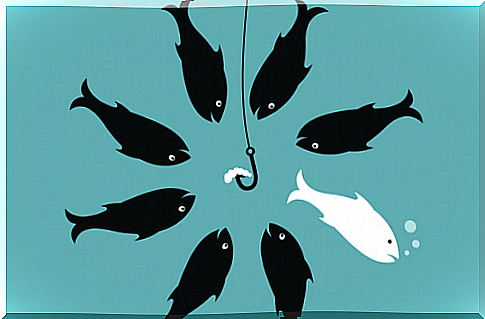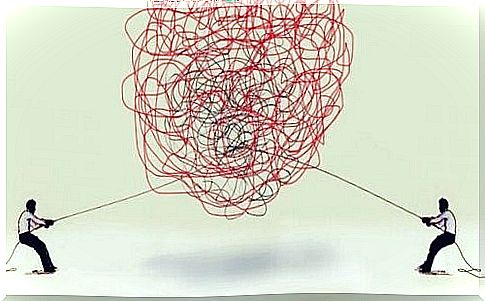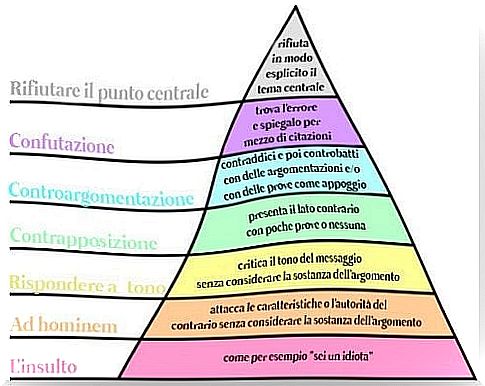Disagree Effectively (and Elegantly): 4 Tips

Knowing how to disagree effectively is a very useful art. We will avoid falling into mere discussion, we will be able to speak skilfully to our interlocutor, avoiding conflicts and defining our position with elegance without generating discussions or insults. It is certainly a tool based on intelligent disagreement that we should all be able to apply in everyday life.
Let’s face it, if there’s something most of us can’t do it’s disagree. Moreover, today there are still many people who confuse the terms and think that this word is synonymous with discussion. It is a mistake and therefore we must deepen its meaning: to disagree means not to agree with an idea or opinion and this does not necessarily have to imply a threat or an offense.
Another element to consider is that dissent defines in a certain sense our individuality, our ability to have our own ideas and not only defend it, but also argue it intelligently to enrich the communication process and the relationship itself.
In our daily life, therefore, disagreeing with someone immediately leads to a polarization where the various subjects involved believe they hold the absolute truth. Comments appear lacking valid arguments and almost without knowing how to start a dispute where no one wins and everyone loses. We often see this on social media and we also see it in any political scenario.
It is therefore advisable to learn to disagree with elegance and effectiveness to avoid these senseless situations. Let’s see the 4 strategies to do this.

Strategies for effective dissent
1. The art of having a calm mind
People who know how to disagree effectively and with great skill first of all know a very simple secret: to disagree effectively you must have a calm mind, you must listen deeply to the interlocutor and understand that nothing that is said must be understood as a personal attack.
A good idea, therefore, would be to move with an open and relaxed mind, trying not to bring the arguments of the other on an emotional level, precisely because dissent does not mean diminishing the opinion of others.
2. Dissent is an exercise that has many benefits
In our daily life, very often we come across people who are used to seeing the world from their own point of view, and only from that point of view. Reasoning with these people can become really difficult, we know, so much so that, sometimes, due to tiredness or because we don’t want to waste time, we tell ourselves that it is better to shut up and agree rather than say a ” I don’t agree with your idea ”.
We are not wrong, learning to disagree effectively allows us to do various things. The first is to reaffirm our identity, our self-esteem and our opinions. The second is to become much more sociable, to improve our relationships and to always be consistent with what we feel, say and do.

3. Pay attention to tone as well as words
Often when we talk to someone and opt to disagree or contradict about something, a concept or an idea, our tone of voice changes and we raise our voices. Right at that moment, our arguments will no longer matter, because such a threatening tone will spark an argument and create a moment of tension.
To avoid this, the best thing to do is to work on emotional regulation. It must be understood, once again, that disagreeing with something should not be interpreted as an offense. We pay attention to this emotionality and try to moderate our voice.
4. Paul Graham’s hypothesis
Paul Graham is a British computer scientist and essayist who achieved great success after his work published in 2008 entitled How to disagree. In it he explains that in order to learn to disagree effectively we must understand that there are certain levels that are more useful and others that are less useful, such as that of insult and offense.
To be effective and discuss with elegance, we must remain at that summit, that argumentative excellence that we can learn over time.

As we see in this graph, the areas in which we should concentrate in order to be able to manage differences are the first 4. Starting from the fifth, and with the yellow hue, we arrive at attack, criticism and offense.
In each of our conversations, when we have to contradict our interlocutors, the ideal would be to obtain the following:
- Provide constructive and useful arguments about the central point of the disagreement.
- Show the other person, with arguments and reasons to the contrary, why in our opinion he is not right or because what he defends does not seem valid. It is necessary to know how to counter with agility and elegance.
- Show the other person that what they think or defend does not have concrete and reliable proof (very useful when, for example, someone tells us “this is true because everyone thinks so”).
In conclusion, we want to add just one detail: we all know that learning to fight back is not always easy. Many times we bring this issue onto the emotional ground, and there we lose control. We should understand that discrepancy is not an attack, but a great opportunity to find agreements, to learn from others and to achieve great goals.









